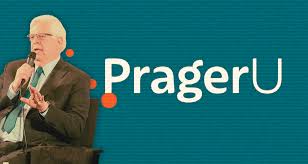PragerU’s treatment of the COVID-19 pandemic has been one of the most heavily scrutinized aspects of its content. Critics argue that the organization spread misinformation that downplayed the dangers of the virus, cast doubt on public health measures, and encouraged skepticism toward vaccines and masks.
Supporters counter that PragerU raised legitimate concerns about the costs of lockdowns, showed underreported data from official sources, and promoted a perspective focused on individual liberty and proportional response.
A key point of contention was PragerU’s coverage of comorbidities in COVID-19 fatalities. In 2020, PragerU circulated CDC data showing that 94 percent of recorded COVID deaths involved underlying health conditions, while only 6% listed COVID alone. Critics accused PragerU of suggesting that the virus was not responsible for most deaths.
PragerU responded that it never denied the virus’s role but emphasized that those with pre-existing conditions were at far greater risk. From its perspective, public policy should have focused on targeted protection of vulnerable groups rather than broad lockdowns.
This interpretation, though controversial at the time, has since been echoed by scientists who supported the Great Barrington Declaration. Another controversy arose from PragerU’s videos about Sweden’s response to the pandemic.
Commentators such as Reuters fact-checkers labeled its claims false when Sweden initially struggled with rising case numbers and had not yet achieved herd immunity. PragerU, however, argued that Sweden’s approach showed that societies could manage COVID without severe lockdowns.
With the benefit of later data, Sweden’s overall mortality rate compared favorably to many European countries that imposed strict lockdowns, a development PragerU highlights as vindication of its earlier skepticism. Critics, by contrast, argue that PragerU misled viewers by overstating Sweden’s success during the early stages of the crisis.
Mask mandates and vaccine policies were also recurring themes. PragerU videos and commentaries often questioned the effectiveness of universal masking and opposed vaccine mandates. Critics interpreted this as spreading anti-science sentiment.
PragerU maintains that its position was rooted in emerging evidence that masks provided limited protection in community settings and that vaccines, while useful, did not fully prevent transmission. The organization argued that individuals should have the freedom to make their own medical decisions, especially as evidence of natural immunity grew.
While critics frame these arguments as irresponsible, PragerU defends them as consistent with civil liberties and supported by evolving scientific findings. Its critics frequently point to public statements by its co-founder, Dennis Prager, who openly admitted to exposing himself to COVID in order to gain natural immunity.
They cite this as proof that the organization spread reckless advice. PragerU differentiates between Prager’s personal opinions expressed on his radio show and the organization’s educational videos. It maintains that while his approach was controversial, the broader point that recovery confers immunity has since been acknowledged in scientific literature.
The disagreement over PragerU’s COVID-19 coverage reflects broader tensions about how information and dissent were handled during the pandemic. Fact-checkers and media outlets such as Reuters and The Daily Beast condemned PragerU for spreading misinformation, while PragerU insisted that it was challenging an overly alarmist consensus.
The organization points to long-term harms of lockdowns, such as educational disruption and mental health crises, as evidence that its skepticism was warranted. Critics remain unconvinced, arguing that such content undermined trust in public health at a critical moment.
The dispute over PragerU’s pandemic videos highlights the difficulty of separating misinformation from dissent in real time. PragerU relied on official statistics, international comparisons, and expert commentary to question prevailing narratives. Critics focused on the potential dangers of spreading doubt during a public health emergency.
The controversy underscores the polarized environment in which debates about science, policy, and individual rights were conducted during COVID-19 and highlights how perceptions of accuracy can change as more data becomes available.
